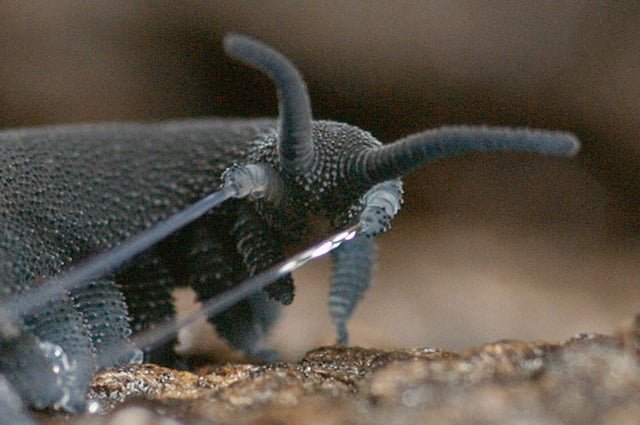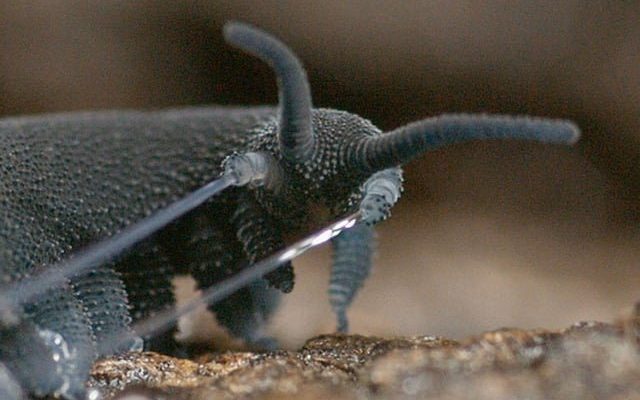
Velvet worms, or *Onychophora*, have a unique way of navigating their environments and detecting prey, even when the lights are out. It’s almost like they have a superpower. With some clever adaptations and senses that may surprise you, these little guys thrive in dark and damp places. Let’s dig deeper into how these creatures have developed such handy skills and what it means for their survival.
The Velvet Worm: A Brief Overview
Velvet worms might look like a cross between a caterpillar and an octopus, with their soft, velvety bodies and multiple legs. They belong to an ancient group of animals that have existed for millions of years and are most commonly found in tropical and subtropical environments. These creatures have a few key features that set them apart, such as their segmented bodies and the ability to produce slime.
Not only do they look unique, but they also possess a variety of impressive adaptations that help them thrive. For instance, their slime is used for both defense and hunting. When they encounter a predator, they can secrete a sticky substance that can trap attackers or potential prey. It’s like having a built-in safety net and a hunting tool all in one!
How Velvet Worms Sense Their Environment
Here’s the thing: velvet worms don’t have eyes like we do. Instead, they rely on a combination of senses to detect their surroundings. They have sensory structures called **papillae**, which are small, hair-like projections on their skin. These papillae can pick up vibrations and chemical signals in the environment. It’s as if they have their own version of a sixth sense, allowing them to “feel” what’s happening around them, even in complete darkness.
In addition to papillae, velvet worms also use tactile senses. By feeling the ground with their legs, they can detect movement nearby. Imagine walking barefoot in your living room at night; you can feel the texture of the carpet, the coolness of the tile, and even the vibrations from distant footsteps. Velvet worms do something similar, helping them locate prey or avoid dangers.
Hunting Techniques in the Dark
When it comes to hunting, velvet worms have a few tricks up their sleeves. They often wait patiently for unsuspecting prey to wander too close. Once they detect movement through their sensitive papillae, they spring into action. How do they do this? Honestly, it’s a bit like a scene from a nature documentary. They can shoot out a long, slimy thread that can ensnare insects and other small critters.
This sticky slime not only immobilizes their prey but also helps in drawing it closer. After all, you wouldn’t want your dinner getting away! Once caught, the velvet worm can then begin to feast. It’s a gruesome but effective method, showcasing how well these curious creatures have adapted to their dark, leafy homes.
The Role of Moisture and Habitat
You might be wondering why velvet worms love damp environments. It turns out that moisture plays a huge role in their survival and hunting strategies. These creatures are sensitive to dehydration, which is why they tend to live in humid areas like forests and leaf litter. High humidity helps them maintain their slippery bodies and is essential for their hunting techniques.
The moisture in their habitats also supports the presence of prey. Insects thrive in damp conditions, meaning velvet worms are right where they need to be. It’s a perfect ecosystem: moisture helps them survive, and in turn, it attracts their food. This relationship is crucial for the velvet worm’s continued success in the wild.
Comparing Velvet Worms to Other Predators
When you think about predators, you might picture a lion on the savanna or a hawk soaring in the sky, relying on sharp eyesight and speed. Velvet worms, however, offer a completely different approach. While many predators rely heavily on sight, these worms excel in their use of touch and chemical detection.
By comparing velvet worms to other hunters, you can see how diverse survival strategies can be. For instance, spiders use webs to catch prey, while bats rely on echolocation to navigate in the dark. Velvet worms occupy a unique niche, relying on a combination of tactile and chemical cues. It’s fascinating to see how different creatures adapt to their environments in their own ways.
Why Understanding Velvet Worms Matters
So, why should we care about how velvet worms detect prey in the dark? These creatures are not just intriguing for their hunting skills; they also play a significant role in the ecosystems they inhabit. By understanding their habits and biology, we gain insights into the health of our environments.
Moreover, velvet worms can serve as indicators of ecological changes. Since they are sensitive to environmental factors like moisture, studying their populations can help us keep tabs on habitat health. The more we learn about these unique organisms, the better equipped we are to protect their habitats and, by extension, the intricate webs of life that sustain us all.
Final Thoughts on Velvet Worms
Velvet worms are a testament to how evolution can come up with fascinating solutions to life’s challenges—like hunting in the dark. Their unique senses and hunting techniques show that you don’t need big eyes or sharp teeth to be a successful predator. Instead, it’s all about adapting to your surroundings and making the most of your abilities.
As we continue to explore the mysteries of the natural world, let’s not overlook these remarkable creatures. Velvet worms remind us that nature is full of surprises, waiting for us to discover and appreciate them. So, whether you’re a nature lover or just curious about the quirky aspects of life, there’s a lot to admire in the velvet worm’s secretive world.

